Audi 2015 Annual Report Download - page 232
Download and view the complete annual report
Please find page 232 of the 2015 Audi annual report below. You can navigate through the pages in the report by either clicking on the pages listed below, or by using the keyword search tool below to find specific information within the annual report.-
 1
1 -
 2
2 -
 3
3 -
 4
4 -
 5
5 -
 6
6 -
 7
7 -
 8
8 -
 9
9 -
 10
10 -
 11
11 -
 12
12 -
 13
13 -
 14
14 -
 15
15 -
 16
16 -
 17
17 -
 18
18 -
 19
19 -
 20
20 -
 21
21 -
 22
22 -
 23
23 -
 24
24 -
 25
25 -
 26
26 -
 27
27 -
 28
28 -
 29
29 -
 30
30 -
 31
31 -
 32
32 -
 33
33 -
 34
34 -
 35
35 -
 36
36 -
 37
37 -
 38
38 -
 39
39 -
 40
40 -
 41
41 -
 42
42 -
 43
43 -
 44
44 -
 45
45 -
 46
46 -
 47
47 -
 48
48 -
 49
49 -
 50
50 -
 51
51 -
 52
52 -
 53
53 -
 54
54 -
 55
55 -
 56
56 -
 57
57 -
 58
58 -
 59
59 -
 60
60 -
 61
61 -
 62
62 -
 63
63 -
 64
64 -
 65
65 -
 66
66 -
 67
67 -
 68
68 -
 69
69 -
 70
70 -
 71
71 -
 72
72 -
 73
73 -
 74
74 -
 75
75 -
 76
76 -
 77
77 -
 78
78 -
 79
79 -
 80
80 -
 81
81 -
 82
82 -
 83
83 -
 84
84 -
 85
85 -
 86
86 -
 87
87 -
 88
88 -
 89
89 -
 90
90 -
 91
91 -
 92
92 -
 93
93 -
 94
94 -
 95
95 -
 96
96 -
 97
97 -
 98
98 -
 99
99 -
 100
100 -
 101
101 -
 102
102 -
 103
103 -
 104
104 -
 105
105 -
 106
106 -
 107
107 -
 108
108 -
 109
109 -
 110
110 -
 111
111 -
 112
112 -
 113
113 -
 114
114 -
 115
115 -
 116
116 -
 117
117 -
 118
118 -
 119
119 -
 120
120 -
 121
121 -
 122
122 -
 123
123 -
 124
124 -
 125
125 -
 126
126 -
 127
127 -
 128
128 -
 129
129 -
 130
130 -
 131
131 -
 132
132 -
 133
133 -
 134
134 -
 135
135 -
 136
136 -
 137
137 -
 138
138 -
 139
139 -
 140
140 -
 141
141 -
 142
142 -
 143
143 -
 144
144 -
 145
145 -
 146
146 -
 147
147 -
 148
148 -
 149
149 -
 150
150 -
 151
151 -
 152
152 -
 153
153 -
 154
154 -
 155
155 -
 156
156 -
 157
157 -
 158
158 -
 159
159 -
 160
160 -
 161
161 -
 162
162 -
 163
163 -
 164
164 -
 165
165 -
 166
166 -
 167
167 -
 168
168 -
 169
169 -
 170
170 -
 171
171 -
 172
172 -
 173
173 -
 174
174 -
 175
175 -
 176
176 -
 177
177 -
 178
178 -
 179
179 -
 180
180 -
 181
181 -
 182
182 -
 183
183 -
 184
184 -
 185
185 -
 186
186 -
 187
187 -
 188
188 -
 189
189 -
 190
190 -
 191
191 -
 192
192 -
 193
193 -
 194
194 -
 195
195 -
 196
196 -
 197
197 -
 198
198 -
 199
199 -
 200
200 -
 201
201 -
 202
202 -
 203
203 -
 204
204 -
 205
205 -
 206
206 -
 207
207 -
 208
208 -
 209
209 -
 210
210 -
 211
211 -
 212
212 -
 213
213 -
 214
214 -
 215
215 -
 216
216 -
 217
217 -
 218
218 -
 219
219 -
 220
220 -
 221
221 -
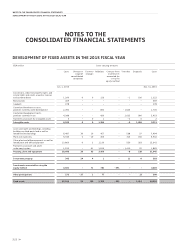 222
222 -
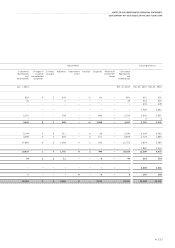 223
223 -
 224
224 -
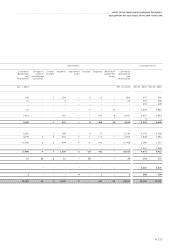 225
225 -
 226
226 -
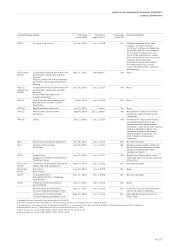 227
227 -
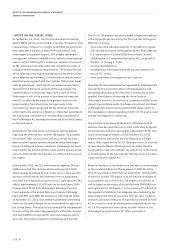 228
228 -
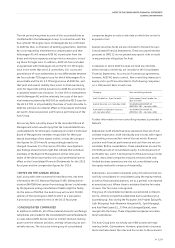 229
229 -
 230
230 -
 231
231 -
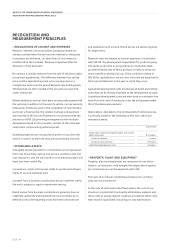 232
232 -
 233
233 -
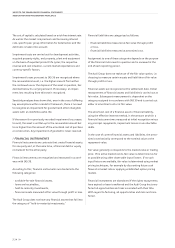 234
234 -
 235
235 -
 236
236 -
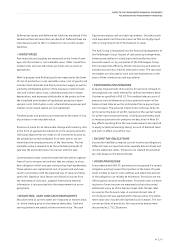 237
237 -
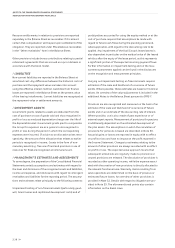 238
238 -
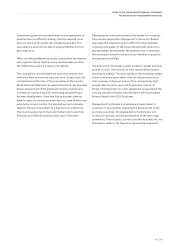 239
239 -
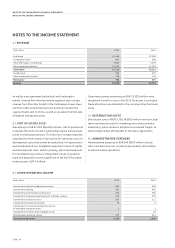 240
240 -
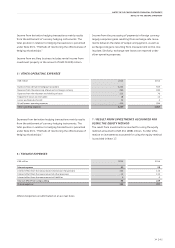 241
241 -
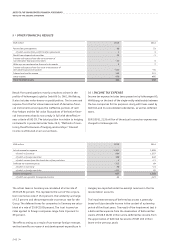 242
242 -
 243
243 -
 244
244 -
 245
245 -
 246
246 -
 247
247 -
 248
248 -
 249
249 -
 250
250 -
 251
251 -
 252
252 -
 253
253 -
 254
254 -
 255
255 -
 256
256 -
 257
257 -
 258
258 -
 259
259 -
 260
260 -
 261
261 -
 262
262 -
 263
263 -
 264
264 -
 265
265 -
 266
266 -
 267
267 -
 268
268 -
 269
269 -
 270
270 -
 271
271 -
 272
272 -
 273
273 -
 274
274 -
 275
275 -
 276
276 -
 277
277 -
 278
278 -
 279
279 -
 280
280 -
 281
281 -
 282
282 -
 283
283 -
 284
284 -
 285
285 -
 286
286 -
 287
287 -
 288
288 -
 289
289 -
 290
290 -
 291
291 -
 292
292 -
 293
293 -
 294
294 -
 295
295 -
 296
296 -
 297
297 -
 298
298 -
 299
299 -
 300
300
 |
 |

NOTES TO THE CONSOLIDATED FINANCIAL STATEMENTS
RECOGNITION AND MEASUREMENT PRINCIPLES
232 >>
RECOGNITION AND
MEASUREMENT PRINCIPLES
/RECOGNITION OF INCOME AND EXPENSES
Revenue, interest income and other operating income are
always recorded when the services are rendered or the goods
or products are delivered, i.e. when the risk and reward is
transferred to the customer. Revenue is reported after the
deduction of any discounts.
No revenue is initially realized from the sale of vehicles subject
to buy-back agreements. The difference between the selling
price and the expected buy-back price is recognized on a
straight-line basis over the period between sale and buy-back.
Vehicles that are still included in the accounts are reported
under inventories.
Where additional services have been contractually agreed with
the customer in addition to the sale of a vehicle, such as warranty
extensions, mobile services or the completion of maintenance
work over a fixed period, the related revenues and expenses
are recorded in the Income Statement in accordance with the
provisions of IAS 18 governing arrangements with multiple
deliverables based on the economic content of the individual
contractual components (partial services).
Operating expenses are recognized in profit or loss when the
service is used or at the time they are economically incurred.
/INTANGIBLE ASSETS
Intangible assets acquired for consideration are recognized at
their cost of purchase, taking into account ancillary costs and
cost reductions, and are amortized on a scheduled straight-line
basis over their useful life.
Concessions, rights and licenses relate to purchased software,
rights of use and subsidies paid.
Goodwill from a business combination has an indefinite useful
life and is subject to regular impairment testing.
Brand names from business combinations generally have an
indefinite useful life and are therefore not amortized. An in-
definite useful life frequently arises from the continued use
and maintenance of a brand. Brand names are tested regularly
for impairment.
Research costs are treated as current expenses in accordance
with IAS 38. The development expenditure for products going
into series production is recognized as an intangible asset,
provided that the sale of these products is likely to bring eco-
nomic benefit to the Audi Group. If the conditions stated in
IAS 38 for capitalization are not met, the costs are expensed in
the Income Statement in the year in which they occur.
Capitalized development costs encompass all direct and indirect
costs that can be directly allocated to the development process.
Capitalized development costs are amortized on a straight-line
basis from the start of production over the anticipated model
life of the developed products.
Depreciation, allocated to the corresponding functional areas,
is primarily based on the following useful lives, which are
reassessed yearly:
Useful life
Concessions, industrial property rights and similar
rights and assets 3–15 years
of which software 3 years
of which customer base 2–8 years
Capitalized development costs 4-9 years
/PROPERTY, PLANT AND EQUIPMENT
Property, plant and equipment are measured at cost of pur-
chase or construction, with straight-line depreciation applied
pro rata temporis over the expected useful life.
The costs of purchase include the purchase price, ancillary
costs and cost reductions.
In the case of self-constructed fixed assets, the cost of con-
struction includes both the directly attributable material and
labor costs as well as indirect material and indirect labor costs
that must be capitalized, including pro rata depreciation.
